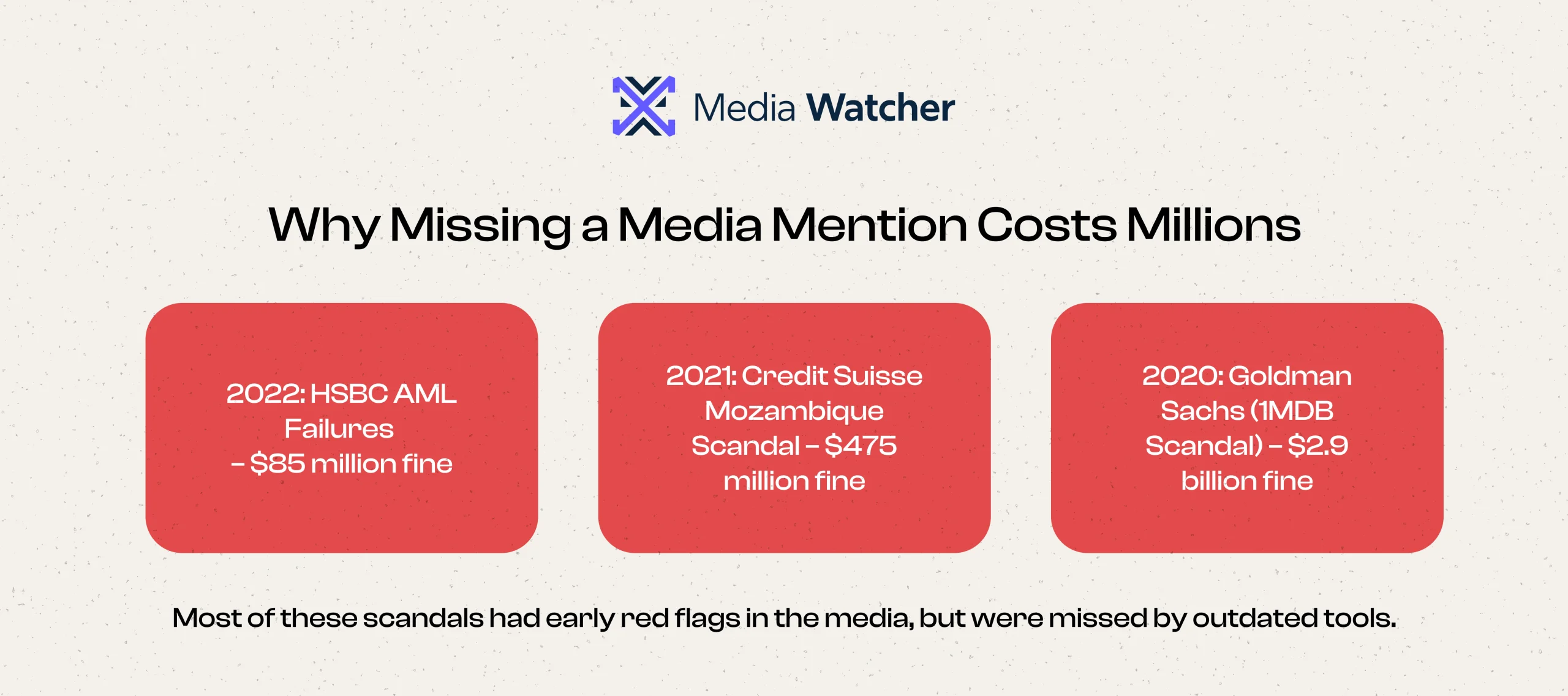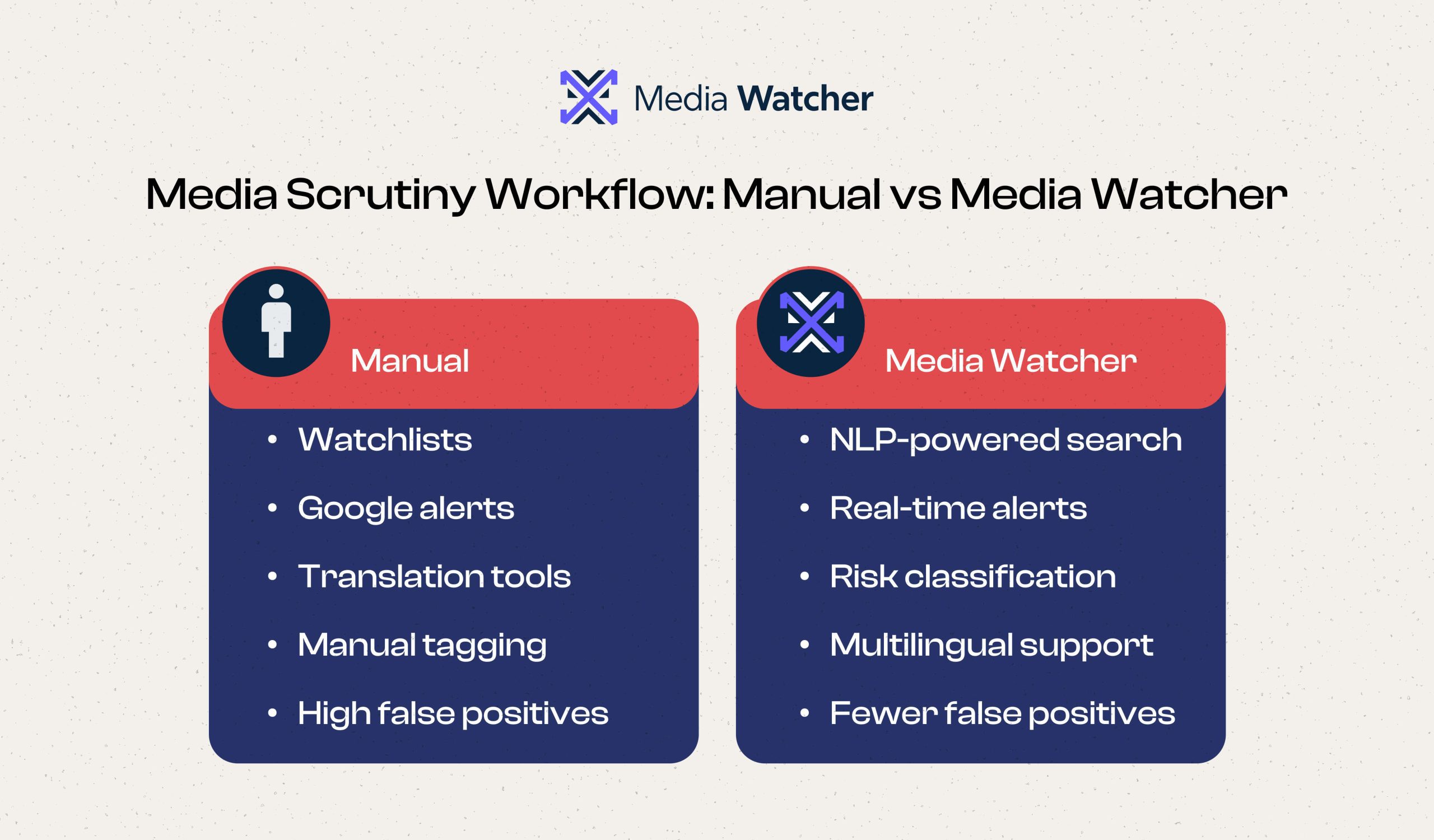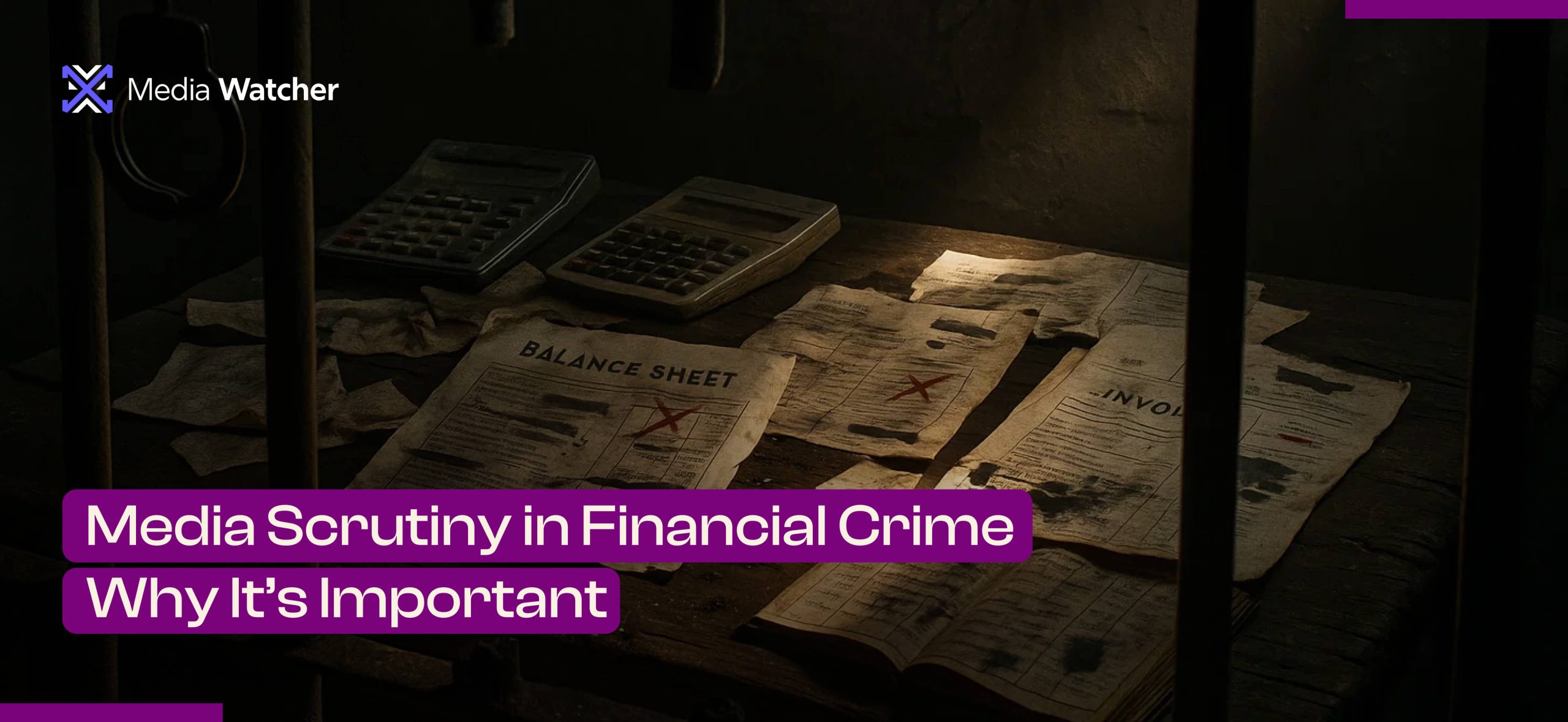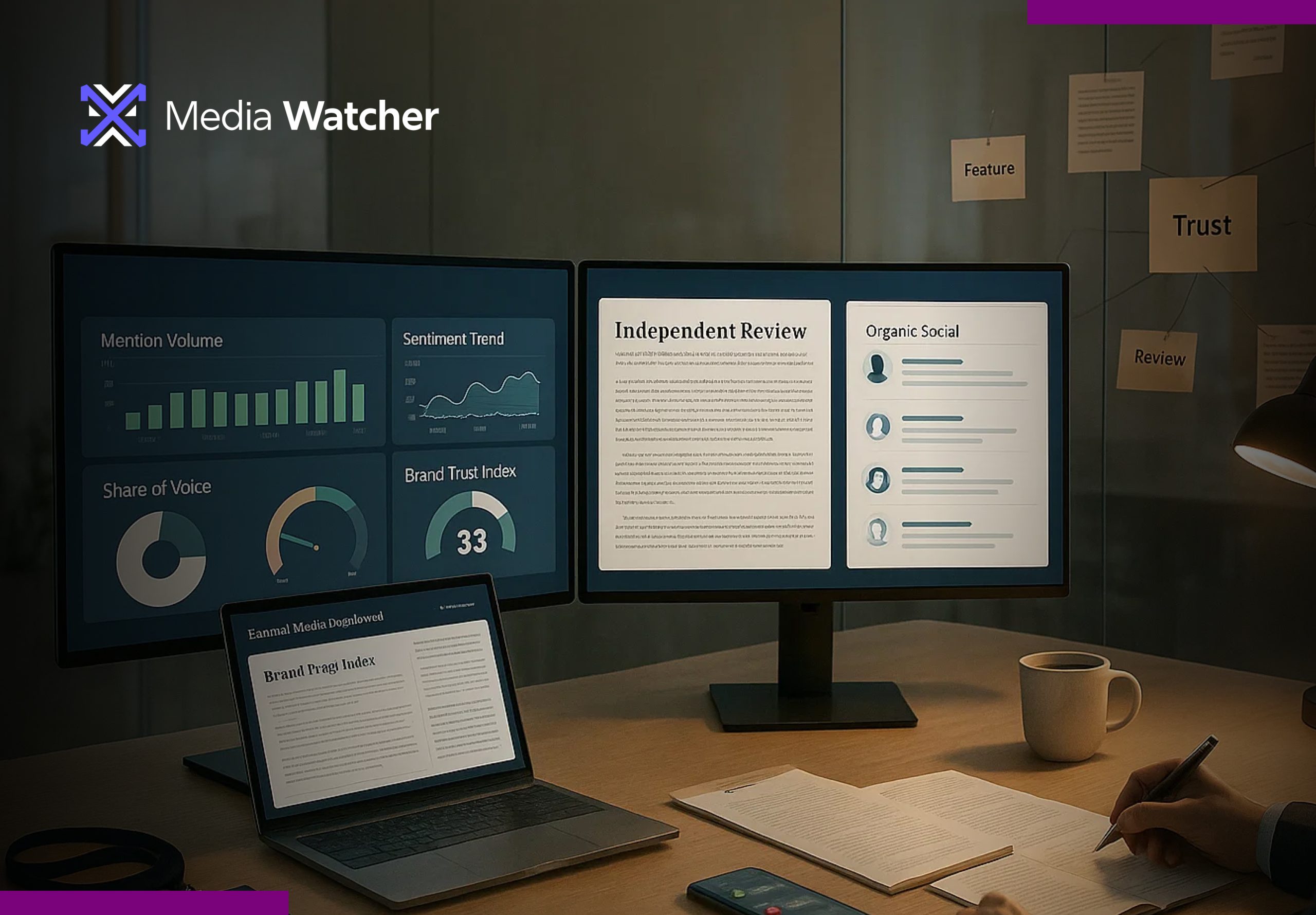Have you ever wondered how much earlier financial crimes could be uncovered if both financial institutions and journalists had faster access to real-time adverse media?
Financial crime no longer hides behind just the offshore bank accounts and shell corporations. It now thrives in the gaps between overlooked media coverage and outdated compliance checks. By actively monitoring emerging narratives, leaks, and investigative reporting, institutions can strengthen their ability to detect early signs of financial misconduct.
In the presence of such criminal tactics, an overhaul of media mentions, particularly social media scrutiny, has emerged as a critical weapon against global financial crimes. The traditional compliance approaches, such as the regulatory filings and internal investigations, alone are not effective.
For this reason, the automated media mention tools play a crucial role in supporting investigative journalists’ efforts to detect hidden associations between high-profile entities. Additionally, these real-time monitoring modules strengthen Anti-Money Laundering (AML) compliance by identifying the individual’s ties to predicate offences, including corruption, terrorism financing, bribery, and fraud. Consequently, they help the financial institutions know if transactions are associated with a financial crime or not.
Let’s evaluate why media oversight in assessing potential associations with financial crime is essential.

Media Scrutiny For Financial Crimes – Challenges Faced by Journalists
As criminals use new ways to conduct financial crimes, it becomes difficult to uncover the illicit financial activities. Some of the many challenges faced by financial fact-checkers and journalists during media scrutiny are examined below:
Structural Complexity
For decades, the major financial crime leaks, mainly Panama Papers and WikiLeaks, have revealed how layered business structures and shell companies are usually exploited by PEPs and other high-profile officials to conceal illicit wealth across jurisdictions.
This is where investigative journalists face the challenge of tracing convoluted ownership structures buried under millions of records. To combat this challenge, adverse media screening platforms help journalists, get insights about these entities’ potential associations with crimes as reported in the news, and hence substantiate the links in those leaks.
Cross-Border Barriers
Press freedom and data accessibility vary across different jurisdictions. The presence of such cross-border barriers makes it complicated for investigative journalists to navigate financial crimes from credible sources.
A news monitoring tech covers this cross-border barrier for journalists, allowing them to extract data from online financial reports and court hearings available on global media channels. This enables journalists to thoroughly verify the legitimacy of financial reports through credible media channels before publications, which also reduces legal risks.
Financial Compliance dilemma
Compliance professionals face a paradox of too much data across media with too short a timeframe. Adverse media screening is a critical component of Anti-Money Laundering (AML) and Know Your Customer (KYC) when ensuring financial crime compliance.
One of the major challenges faced by compliance officers during this scenario is the transliteration pitfalls, name commonalities, and context blindness while assessing diverse financial reports manually. Therefore, the reliance on media assessment tech enables the detection of high-risk narratives and flags mention of recurring entities across the diverse news outlets.

How to Ensure Effective Media Scrutiny for Actionable Insights
Banking institutions rely on the high-risk entity databases, sanctions lists, and internal financial data to identify whether an entity is associated with financial crimes or not. However, media scrutiny, supported by real-time media monitoring tech, is equally vital in identifying early warning signs of financial crime risks
Sanctioned entities don’t always make their debut on official lists first. In many cases, names appear in press releases or media reports days before regulatory bodies like EU Council or OFAC formally publish them. This delay creates a critical window where early media assessment can make all the difference.
However, adverse media screening tools, which scan these PR sources in real-time, ensure timely detection of new sanctions even before they appear in the regulatory lists.
Media Analysis Use Cases in Financial Scrutiny
The ability to assess risk signals ahead of official channels explains the strength of media monitoring in not just tracking sanctions, but also enhancing the global financial scrutiny workflows. While the prominence of online news assessment in strengthening media scrutiny is clear, its true value lies in its ability to be applied on the ground. Here is the breakdown of its critical use cases:
Financial Institutions:
For financial institutions and banks, regulatory compliance acts as a critical risk shield. With automated media tools, financial institutions can seamlessly track the mentions of Politically Exposed Persons (PEPs) and suspicious entities in relation to predicate offenses across thousands of online sources.
Investigative Journalists:
When investigative journalists are struck with millions of documents or face legal repercussions for exposing high-profile financial crimes, a systematic tech-powered media review enables them to verify facts and to further corroborate the claims identified in leaked documents.
The comprehensive media monitoring tools enhance the journalist’s ability to flag high-risk entities based on negative news trends while tracking whistleblower leaks from global media.
Additionally, many journalists rely on social media to investigate events or extract relevant information from across the globe. Manually sifting through these platforms can be a tedious and time-consuming process.
In the context of the financial crime guide, here are the key contributions of media screening in financial crime detection:
- Identifying red flags through adverse media reports
- Detecting whistleblower leaks and tracking emerging risks
- Interpreting regulatory commentary and financial disclosures
- Getting relevant information through social media mentions
Historically, major financial crime red flags, like those exposed in Panama Papers, came to light due to persistent investigative journalism. In the Panama Papers case, a whistleblower leaked over 11.5 million documents. In light of this event, the media outlets didn’t just publish reports; they told stories and exposed the entities involved in financial crimes.
During such high-stakes investigations, media analytics guides financial crime compliance teams to assess sudden changes in a firm’s reputation or perceived risk. With ongoing monitoring and sentiment synopsis, investigative journalists gets assistance in establishing links to actual crimes of the entities they are investigating. In some cases, they get to know further stories which validate the claims of these leaks.
Suggested Read: Social Media Monitoring – The Silent Force Behind Leading Brands

Convert Media Noise Into Actionable Insights With Media Watcher
Media scrutiny has evolved as a major player in the fight against the globally recurring financial crimes. During such instances, financial intermediaries, investigative journalists, and AML obligated sectors are on a continuous lookout for a tool that cuts through the diverse media noise in real-time.
- With Media Watcher’s real-time monitoring, firms can track the financial profiles and activities of potential clients across more than 100,000 sources while reducing the false positive rates.
- Its customizable alerts and specific entity search dashboard provide a tailored screening support according to the client’s risk appetite.
- Media Watcher seamlessly extracts and provides decades-old historical data, which helps institutions understand the client’s financial patterns associated with a particular keyword or hashtag.




